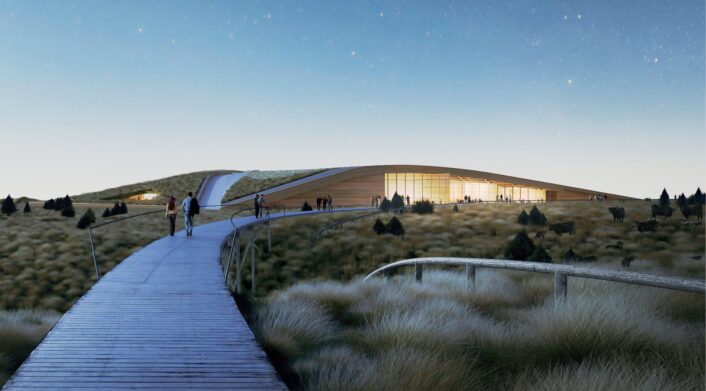Culture
WOW- Royal Portuguese Reading Room library in Rio
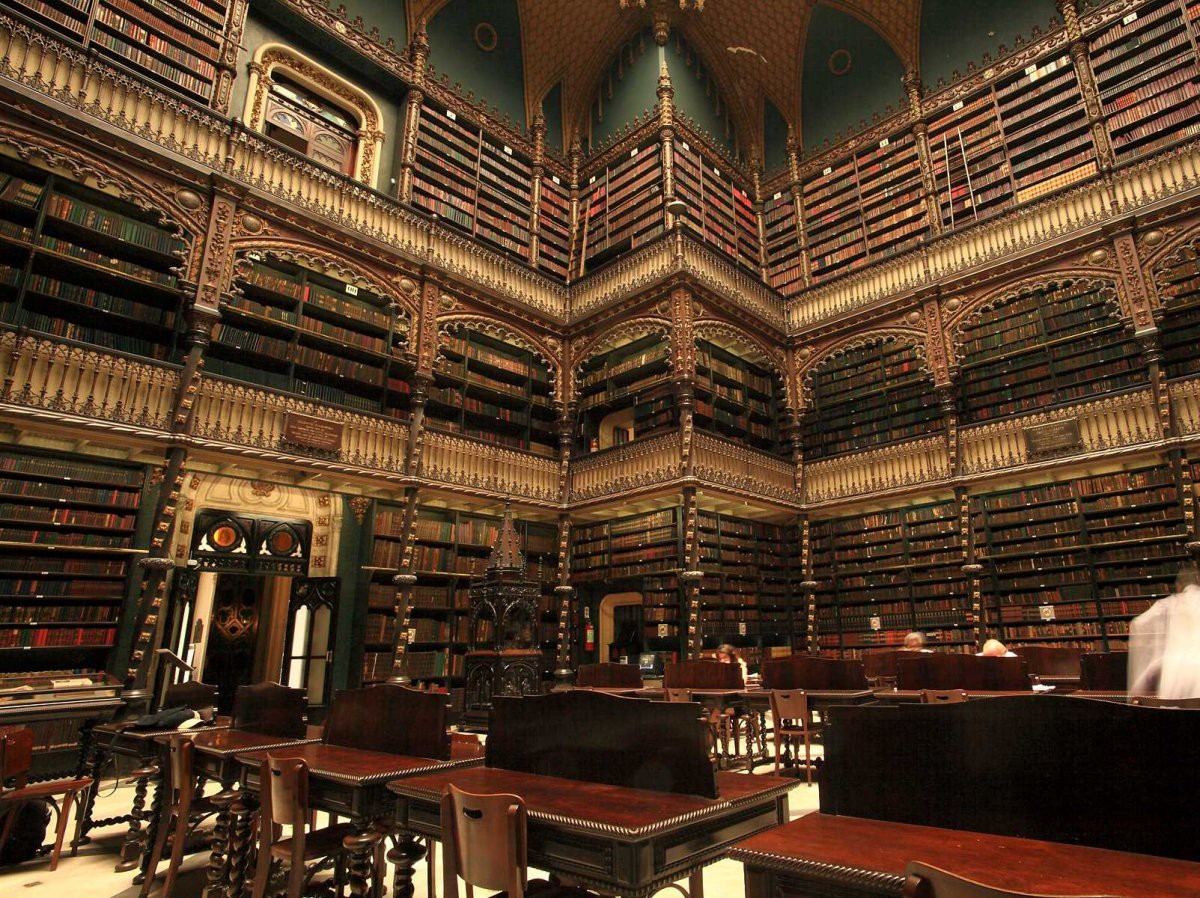
The library’s large wooden galleries.
Image courtesy of: Medium
Cities often have hidden gems, and no stranger to that fact is Rio de Janeiro. Tucked away in the city’s center, the Royal Portuguese Reading Room is all but ignored in most tourist itineraries. However the stunning library should be at the top of that list due to its beauty and breadth of culture within its four walls.
In July 2014, the library was voted the 4th most beautiful library in the world by Time Magazine. Courtesy of an article by Sarah Brown for Culture Trip, “With an appearance of being froze in time yet simultaneously alive with the history and tales of the last few centuries, it is little wonder that it is celebrated for its beauty and immense cultural value.”
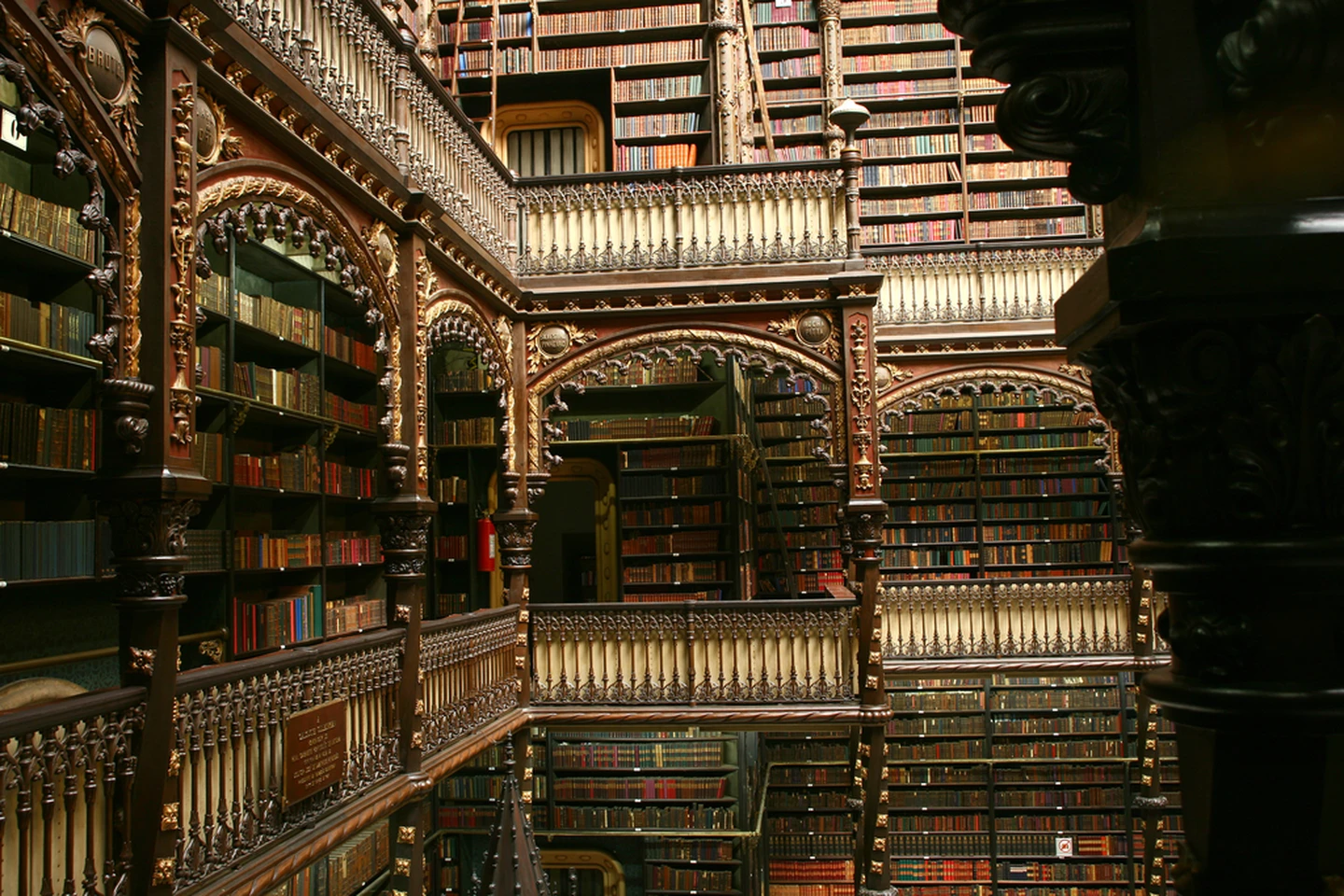
Brazil became a Portuguese colony in 1500.
Image courtesy of: Culture Trip
The library’s history goes back to 1837 when a group of 43 Portuguese immigrants came together to conceive of a way to promote Portuguese culture for those living in Brazil. However it took several decades for construction to begin; the Portuguese architect Rafael da Silva was in charge of the magnificent project.
Constructed in a neo-manueline style with a limestone exterior; statues of four of Portugal’s premier explorers- Luis de Camoes, vasco da Gama, Pedro Alvares, and Infante D. Henrique, are placed throughout. Rio was already home to an enormous collection of Portuguese texts by the time the library’s doors finally opened in 1887. As capital of the Empire of Brazil, it was extremely important for the Portuguese immigrants to bring their country’s literary tradition to the newly independent nation of Brazil.
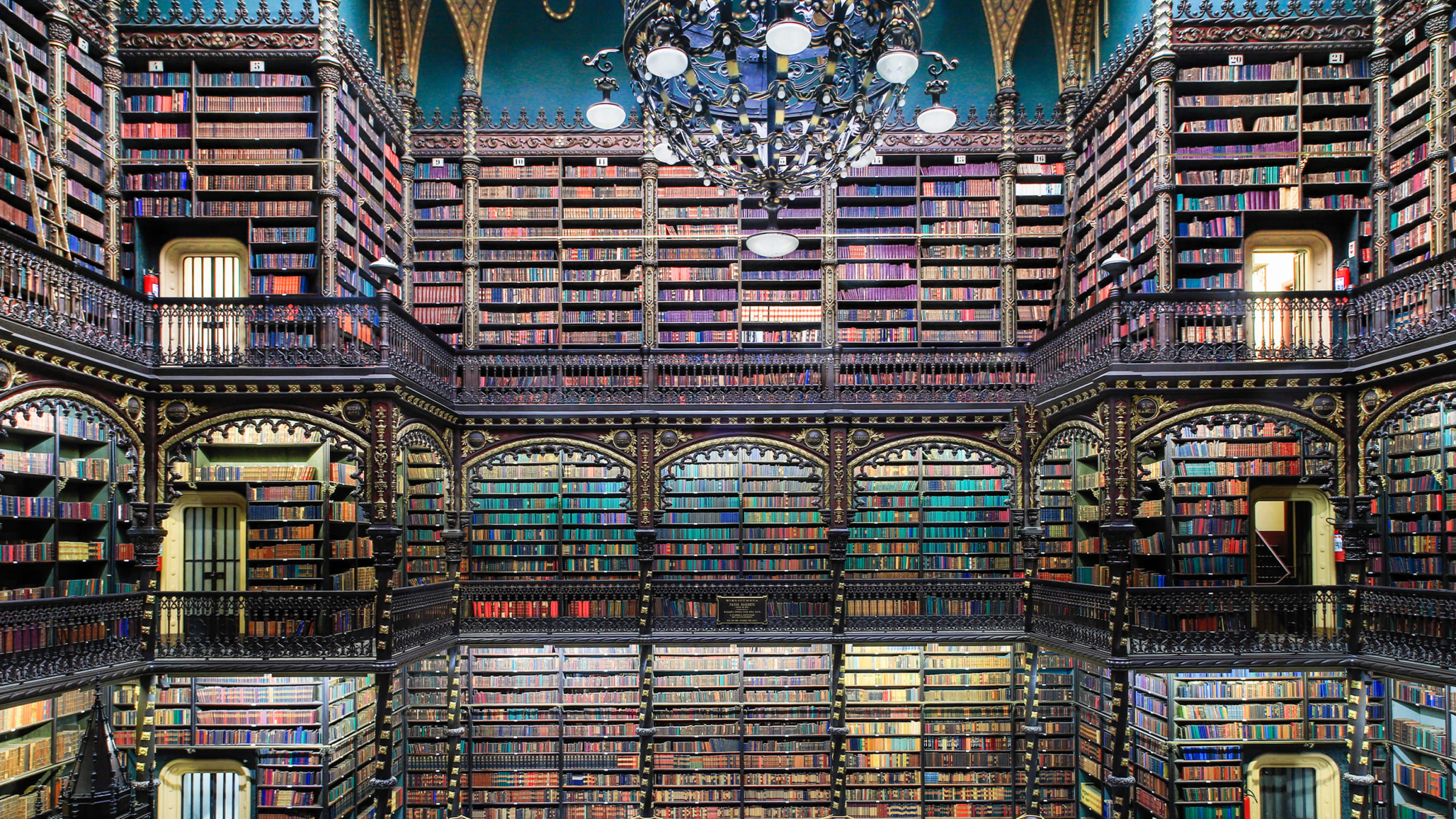
When the library finally opened on December 22, 1888, there were 120,000 volumes in the collection.
Image courtesy of: Daily Beast
In addition the library’s beauty, the reading rooms hold some of the world’s most rare pieces; for example, “As Ordenacoes” by D. Manuel from 1521. Home to over 350,000 works, the library houses the largest collection of Portuguese books outside of Portugal. In accordance to the library’s status as a “legal deposit,” a copy of each new book published in Portugal is added to the enormous collection. As such, each year the library receives 6,000 titles from Portugal to add to its already impressive collection.
In addition to books, the library is also home to a number of impressive paintings by artists that include Oswaldo Teixeira, Henrique Medina, Jose Malhoa, and Carlos Reis. In 2017, the library was closed to visitors as part of a multi-year renovation of the paintings and roof.
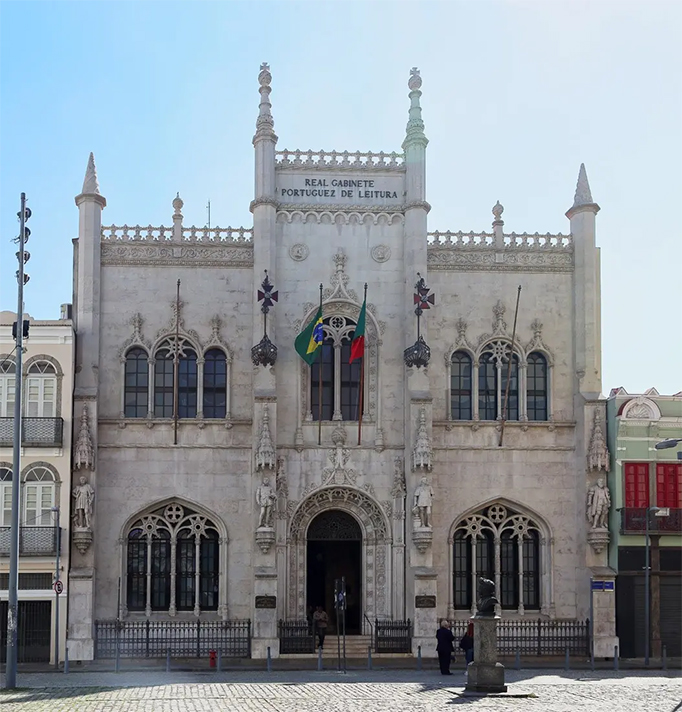
The exterior is constructed out of limestone; ornamentation is also displayed on the finials, around the gothic-style windows and doorways, and along the roofline.
Image courtesy of: Imaginoso
Rafael da Silva Castro, the library’s architect, had previously been in charge of restoring Lisbon’s Jerónimos Monastery that fell to despair following an earthquake. One of Lisbon’s most famous buildings, the structure’s magnitude seems to extend into the distance for an eternity. Inside, spindly columns sprout up (courtesy of Daily Beast), “into spider-webs of vaulting that mesmerize.” The monastery is perhaps one of the best remaining examples of Manuleline architecture… an ornate style that is also called Portuguese Gothic, that is a combination of different architectural influences.
Silva Castro was the obvious choice given the number of the country’s prominent Jerónimos; furthermore, the architect’s style was an example of how much the “transplant Portuguese” were focused on their motherland. Neoclassical architecture had ruled throughout that part of Europe for the 18th and 19th-centuries which led the Portuguese to search for an “authentic national architecture.” Before long, what began as a fascination became a genuine architectural and decorative movement.
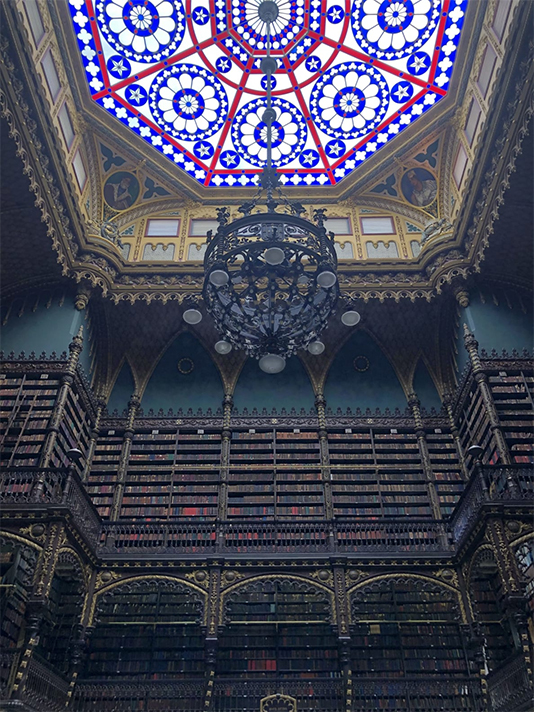
The stained-glass dome floods the interior with natural light.
Image courtesy of: Daily Beast
The interior is 100% Gothic… breathtaking. Upon entering the library, an arc of twisting iron vines welcomes visitors as they stand on white marble diamond-shaped tiles that are outlined in black marble. Ornately decorated dark wood bookcase galleries are accented with gold; these stretch up into an arcade gallery of gold and dark green Gothic arches.
From above, an expansive wrought-iron chandelier hangs as a stunning centerpiece. Contrary to intuition, the interior is not stuffy or oppressive; rather, the stunning stained-glass dome at the apex floods the space with natural light. A special place for bibliophiles; it is certainly a place that everyone can enjoy!

